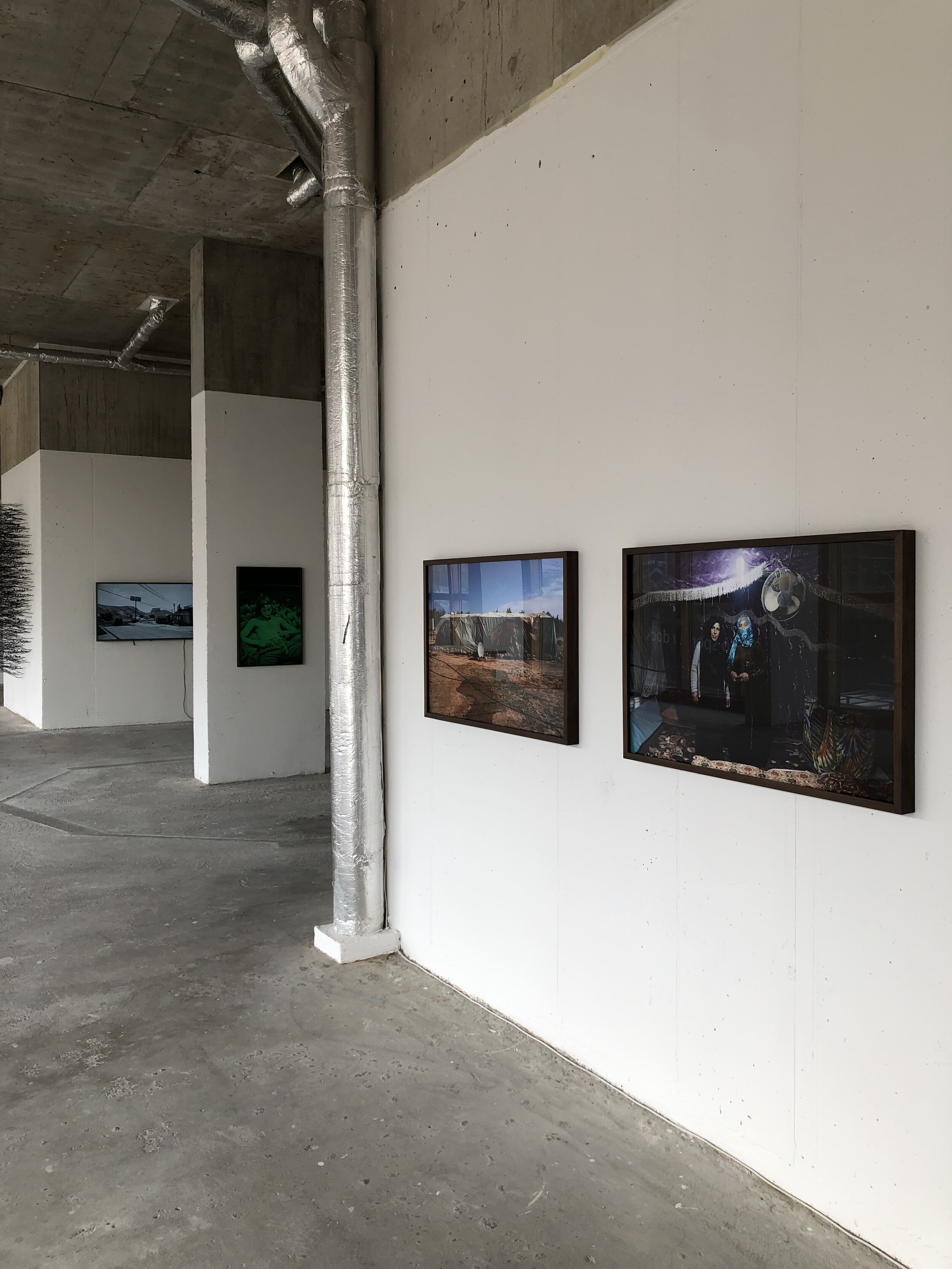REFUGE
REFUGE
8 July - 19 September 2021
Green On Red Gallery is pleased to announce the opening of an exhibition that has been years in the making. The mass migration of refugees from the middle east, particularly from 2016 on, some fleeing a rampant ISIS, caused a crisis at the gates of citadel Europe. Countries reacted with differing amounts of generosity and compassion. Ireland, at the safest distance in Europe from the impending mass movements from Africa and the Middle East, had set up the insipidly titled “ direct provision “ in 1999 to house or to contain such refugee families and asylum seekers. While numbers have fallen since 2016, Refuge continues to be a problem for countries the world over, from Australia to the UK. Recent parliamentary proposals for offshore holding centres in Great Britain for asylum seekers reveal just how intractable - or inevitable - this problem continues to be, globally.
Discovering the work early on of Mona Hatoum, Emily Jacir and ( in Documenta XI, 2002 ) Zarina Bhimji sowed the seeds for REFUGE in Green On Red Gallery, Dublin. As a gallery space and an idea, Green On Red Gallery aims to be a safe harbour for new thinking and new propositions.
Giliane Tawadros wrote how the “ fault lines have been etched into the physical fabric of our world through the effects of colonialism and post-colonialism, of migration and globalization. “ Here she was setting out the kind of reckoning found in the work of artists like Bhimji and Mathieu Kleyebe Abbonenc; and perhaps the kind of critical debate needed still, in order to inform some of today’s art and politics.
Bhimji has described the works as being concerned with “ learning to listen to ' difference ', the difference in shadows, microcosms and sensitivity to difference in its various forms. Listening with the eyes, listening to changes in tone, difference of colour… it is about making sense through the medium of aesthetics.
Contemporary African Art and Shifting Landscapes : Ed. By Giliane Towadros and Sarah Campbell p. 20
Bhimji, Hatoum and Jacir and a number of artists in the current Green On Red Gallery Refuge exhibition make work from their direct experience of forced migration or exile. Others in the exhibition make urgent work about life in the margins or in a contested space.
Exhibition Curator: Jerome O’Drisceoil
Mona Hatoum
Afghan ( black and red ) ( 2009 ), 152 x 206cm
Mona Hatoum
At the entrance to Refuge, Mona Hatoum’s Afghan ( black and red ) ( 2009 ) wool carpet and Untitled ( rack ) ( 2011 ) beckon the viewer to approach and use them. These domestic-looking objects have been re-purposed as maps of the globe in multiple dimensions, including a world map picked out or worn out of the deep red carpet. In Untitled ( rack ) thin aluminium clothes hangers bend into perfect circles circumscribing and overlapping, in venn fashion, a carbon tracing of the world drawn onto the wall behind. The viewer is catapulted from the inconsequential to the universal in Hatoum’s rhyming of images and metaphors. On the far hook of the same rack is a paper territorial map of the planet – in French – cut to expand or to drop into a string bag. Centred at the bottom of the bag, inside and out, sits a solitary continent of Africa. Above, it reads : “ Paris est la plus grande ville d’Europe. “ Maybe there’s a connection?”
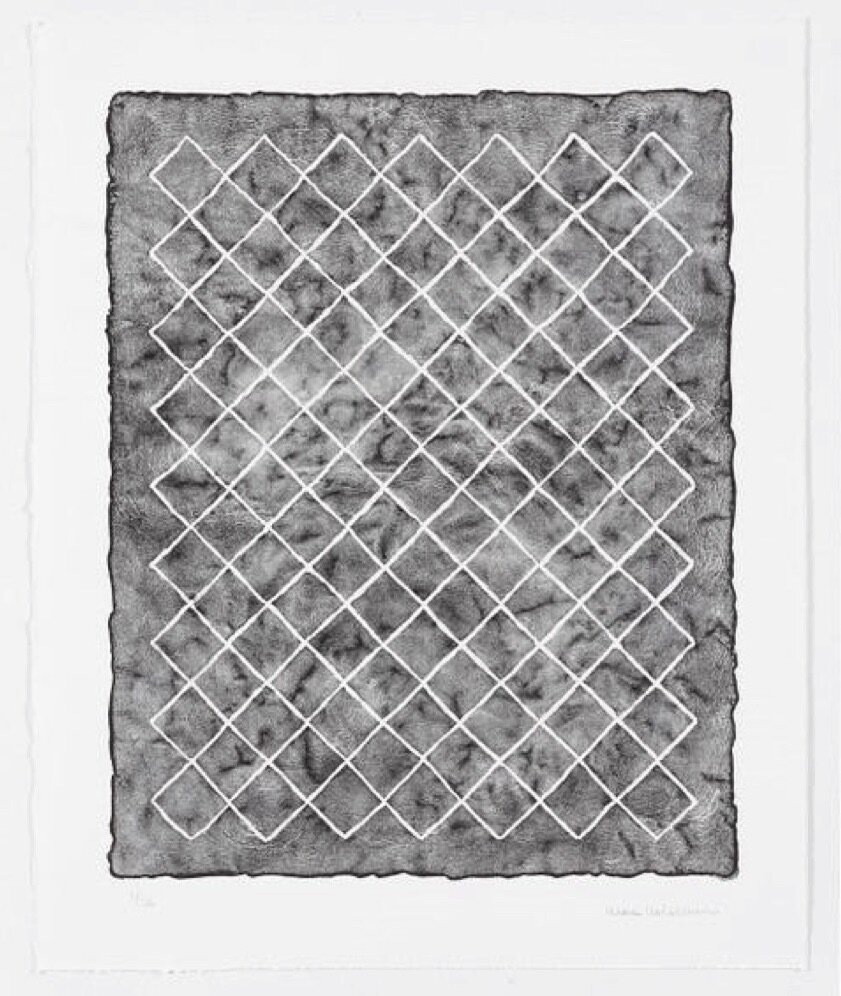

Next to Hatoum’s rack sits Alan Butler’s Down and Out in Los Santos photograph of streetside weeds and discarded refuse bag. Using the cameraless editing tools available inside Grand Theft Auto V, Butler’s Down and Out in Los Santos uncovers - á la Richard Avedon - the homeless conditions of virtual communities “ existing “ on the margins of this multi-billion dollar digital playground. Skid Row clearly lends the requisite credence and authenticity or as Butler puts it : “ They gather in areas which form as a sort of by-product to the hyper-capitalism all around. “ He says :
‘I am interested in these corporate virtual simulations as a metaphorical space to explore our digital existence….I started taking pictures of the homeless, their surroundings, their clothes, their mannerisms. From then on, I had abandoned the violence-driven narrative of the game, to engage with what was going to become an extensive photographic documentary series about poverty in this game world. I have become interested in this modality of ‘ peaceful interloper ‘ within these otherwise carnage-filled simulations.’ - In conversation with Alessandro Vincentelli for Baltic Centre for Contemporary Art's Digital Citizen – ThePrecarious Subject exhibition in 2019
Alan Butler
‘Down and Out in Los Santos’, (2017)
Adopting a photojournalistic approach, the series aims to engage in a sort of social-realism for the software-age, documenting poverty and the lives of the homeless within video game environment’s socio-economic hegemony. Through performative engagement with the uncanny simulations of society’s most vulnerable, Down and Out in Los Santos aims to unearth the viewer’s empathy and humanity through manipulative photographic tropes.
Alan says:
“Embarking on daily photographic expeditions within this video game, I have already spent over a year capturing these homeless people, their surroundings, the infrastructure, and hopefully the symptoms and causes of their states of being. The initial result is thousands of quasi-photographic images, which depict moments of real intimacy between myself and these virtual people. There are a number of ways that this is achieved - such as waiting for eye-contact with the simulant, or using depth of field to draw focus to objects, poses, limbs and intimate moments between groups of people. These individuals do not provide the game with any functionality per se, as they never intersect with the narrative. Instead they exist as why I think of as an ‘ambient human presence’. I am not proud to say that they exist in a similar place of reality to the homeless people who sit on the doorsteps of my studio every day in Dublin’s city centre.”
‘TwentySix Gasoline Stations’
Edition of 5, (2017), Alan Butler
‘TwentySix Gasoline Stations’, (2017), Edition of 5, €5000, Alan Butler
Anne Tallentire
Material Condition II
Material Condition II
‘I am interested in flux, mobility, chance and working with and dismantling, re-figuring and re-ordering of materials and systems, primarily in relation to conditions of social and political life. This then produces a practice that is more or less permanently on the move, materially and conceptually.’
Material Condition II ( 2021 ) by Anne Tallentire follows her commission in Derry on the centenary of the first world war called Shelter. Writing in Art Review on that commissioned work, Marianne O’Kane Boal explains that:
“ .. the work explores the historic and conceptual relationship between the historic Nissen hut, invented for the mass mobilization of troops stationed across the continent 100 years ago and how contemporary modes of ‘ emergency architecture ‘ respond to the precarious and humanitarian crisis of the ‘ mass movement of peoples ‘ in Europe today… The materials are ultimately destined for Calais where they might eventually become a shelter for refugees….The journey of these materials is defined by a restless movement, adaption to space/requirements and an uncertain future.”
The same critical spirit and fluid existence inhabits Material Condition II. The artist’s use of the most ordinary of building materials is at once a polemical, conceptual and aesthetic choice, chiming with her Arte Povera and post-minimal roots. But complex strategies of placement, construction and some ‘ rules of engagement ‘ as outlined by Rachel Thomas in her essay of the same title, bring the viewer on a journey from the most mundane or endotic to the richness of her stacked and porous Material Condition II. Each side of the stacked sculpture presents a different and surprising face. Neat baton ends at the back are placed where you would find the dentils in a classical Greek cornice while the OSB boards cantilever on the front side like deep hanging eaves. Like a dolmen, the sculpture holds itself insistently in the centre of the room by its own obdurate weight and internal structural logic. Unlike a dolmen, it is made to be assembled and reassembled.
Bassam Al-Sabah
‘Wandering, wandering, with a sun on my back’, (2008)
HD film, CGI Original time: 16 minutes 19 seconds
“The tone of this film is existential, contrasting with the hyper-concentrated computer-generated visuals. We are presented with a shimmering human representation within dwellings that cannot be escaped. These dwellings are set in landscapes that oscillate between dystopian and utopian scenery objects pulsate, morph and melt into each other producing an amorphous representation of pain and suffering. ”
‘Wandering, wandering with a sun on my back’. (2008), HD film, CGI Original time: 16 minutes 19 seconds, £10,000
Vukasin Nedljkovic
Untitled (Asylum Archive), (2021) 78 x 166cm
From Belgrade, Vukašin Nedeljkovic lived in direct provision in The Old Convent Direct Provision Centre, Ballyhaunis, Co. Mayo from April 2007 to November 2009. From his own testimony the experience of incarceration, as he described it, was traumatic and demoralizing causing him to find a way out of the withdrawal of freedoms through his art and photography. He founded Asylum Archive to continue and to build on this work, as much for others as for himself. It is a platform for dialogue and support as follows :
The grid layout of identically-painted, cream-coloured mobile homes in a wet black asphalt expanse in Lissywoollen Accomodation Direct Provision Centre, Athlone, Co. Westmeath ( 2013 ) eerily resembles the ghostly prisoner of war camps in the neighbouring Block ( Camp ) ( 2018 ) giclée prints by Nigel Rolfe.
Vukašin elaborates :
“The Direct Provision Scheme is a continuation of the history of confinement in Ireland through borstals, laundries, prisons, Mother and baby homea and lunatic asylums. When the Irish State initiated the direct Provisioin Scheme, it deliberately constructed a space where institutional racism could be readily instantiated, explicitly through, for example, the threat of transfer to a different accommodation Centre or for deportation.”
“Asylum Archive is a platform open for dialogue and discussion inclusive to individuals who have experienced a sense of sociological/geographical ‘displacement’, memory loss, social trauma and violence. It is an act of solidarity to bring a different perspective on the life of people who came to Ireland to seek protection ”
‘Block (Camp) #1 - #6’, (2018), Giclee Print, Mustard Lard and Pigments,160 gsm, 65 x 50cm, €1100 (each)
Nigel Rolfe
(Right) ‘Cover Me’, (2021), Giclee Print on Fabriano, 100 x 70cm, €1500

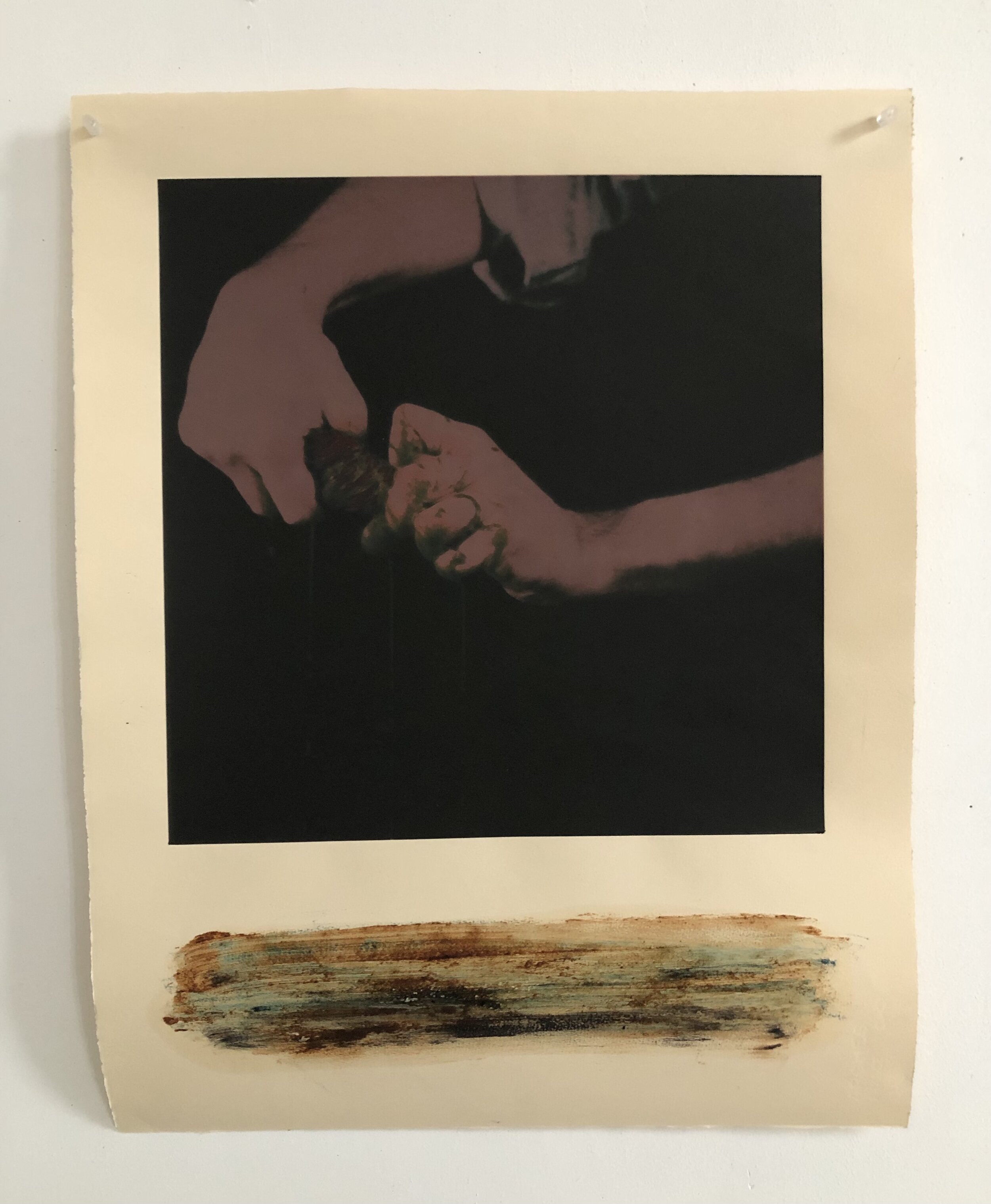
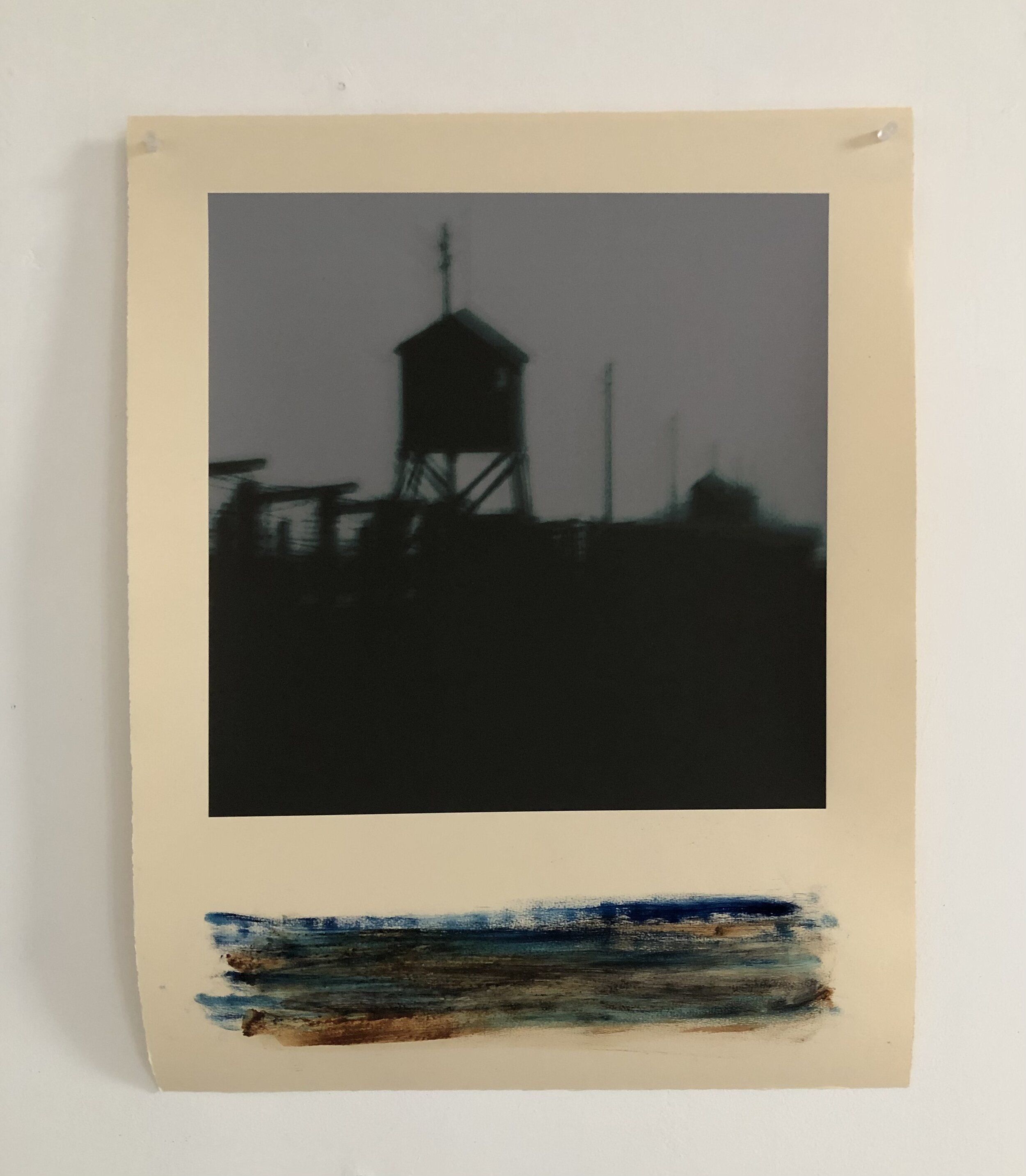
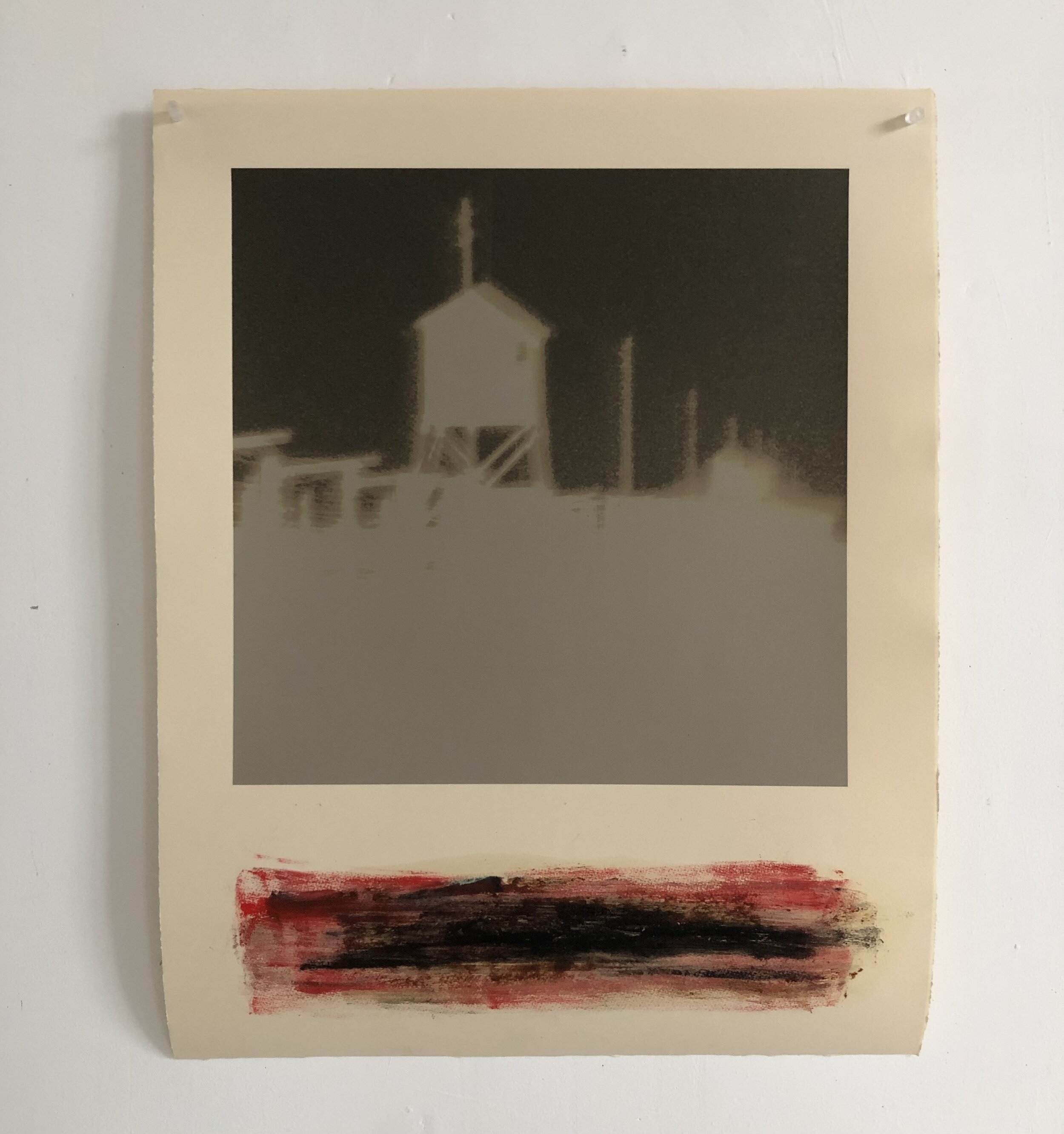

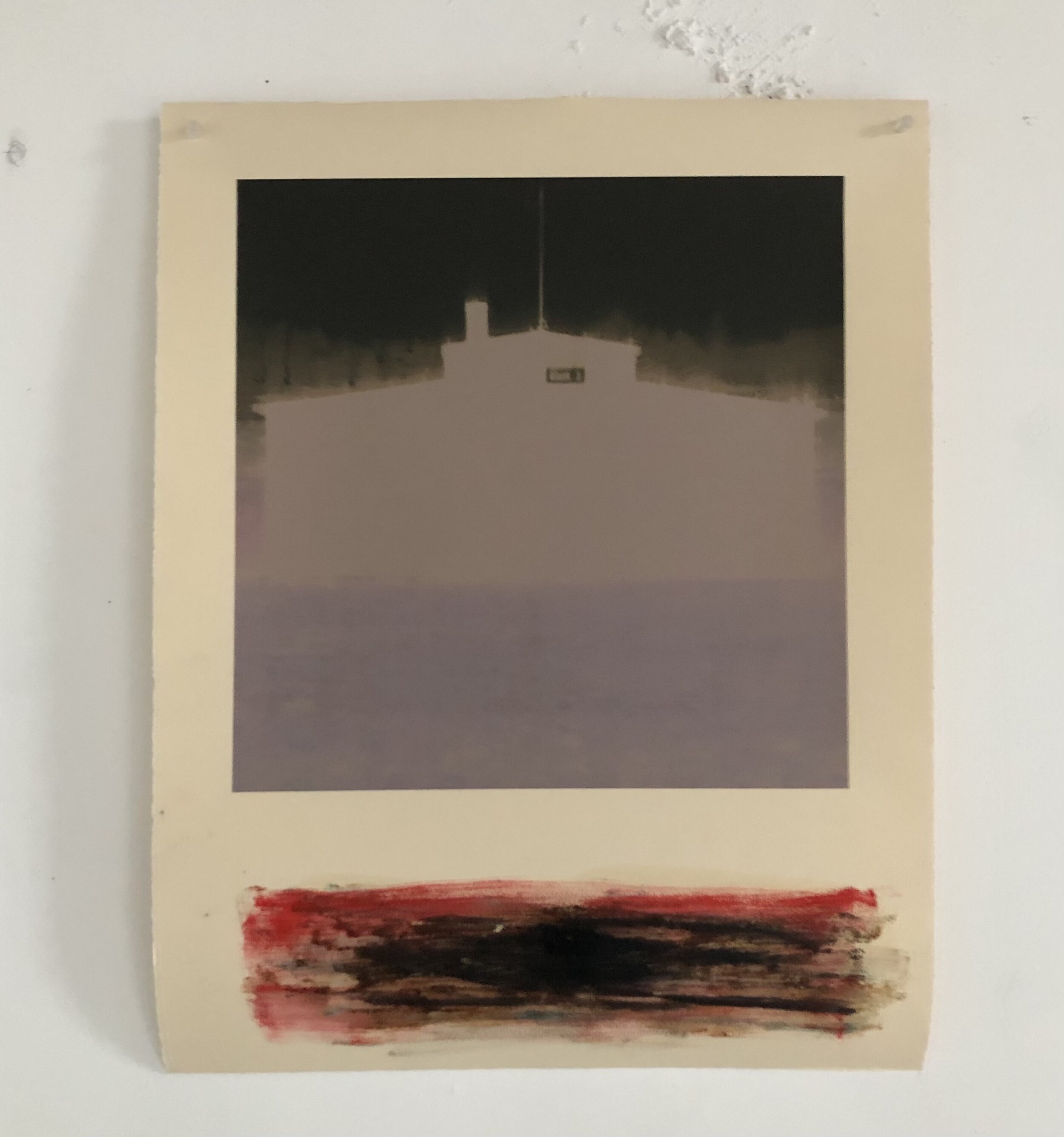
Nil Yalter
Exile Is A Hard Job, (Is Post Crua É An Deoraícht)
“ In formal terms, the posters introduce the faces of people a city wants to ignore or exclude into its very urban fabric. Yet they do so in the most fragile of ways; in most cases the paper posters are quickly and violently torn down by residents and passersby. As much as this work bears witness to the suffering of immigrants, then, it exposes the rage and intolerance of the society in which those immigrants find themselves.”
Anita Groener has created an extraordinary site-specific installation rich in atmosphere and immensely skilful in its exacting execution. The work enables an imaginative journey between present and past, between here – geographical, social and cultural locations of the spectator – and there – the site of the original trauma. Groener wholly embraces one of the most important issues of our time and stirs us to reflect on the magnitude of the current refugee crisis and the subsequent homelessness that has ensued.
Anita Groener
“The world is witnessing the highest levels of displacement on record. An unprecedented 70.8 million people around the world have been forced from home by conflict and persecution at the end of 2018. Among them are nearly 30 million refugees, over half of whom are under the age of 18. There are also millions of stateless people, who have been denied a nationality and access to basic rights such as education, healthcare, employment and freedom of movement.'“ - Anita Groener
Tom Hunter
Tobias Zielony
“The term ‘Maskirovka‘ describes a tradition of Russian warfare tactics of deception. The so called ‘green men that occupied Crimea and helped pro-Russian forces in Eastern Ukraine were in fact Russian special forces wearing face masks to hide their identities, starting a hybrid war that was never officially declared. The recent political developments as well as the Russian interference into the country‘s internal affairs can be seen as a sad travesty in which everything is possible but nothing seems to be real.” - KOW, Berlin (2017)
They Are Here
They Are Here, ‘We Help Each Other Grow’, (2017), Video Installation, Sony Cube, NFS


































